|
|
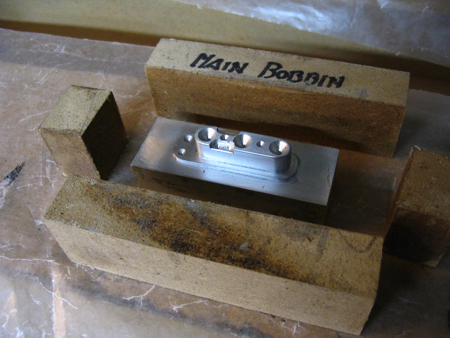
Here's the master for the M-pickup bobbin, and the wood blocks that will surround it while pouring the mold. It's actually one half of the bobbin, including one flange. It's machined from a solid block of aluminum, leaving a lower base surface. The locations where the holes will be drilled are marked with centering spots, so they will be in the cast part.
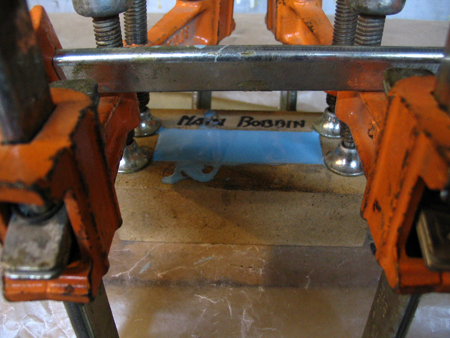
Pouring a mold: The M-pickup bobbin master is surrounded by a form of waxed wood blocks, temporarily held together with clamps. The silicone rubber molding compound is mixed and poured in, filling the box.
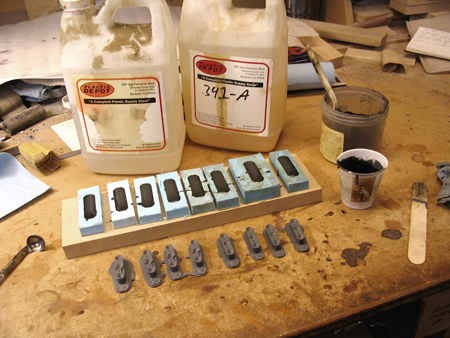
Casting a batch of M-pickup halves. I have eight molds lined up so that I can cast one whole instrument set at a time. The polyurethane resin is quickly mixed and poured right into the molds. Eight raw cast parts are in the foreground while another set is curing in the molds. I don't use any mold-release spray when casting polyurethane parts. It isn't necessary and it roughens the surface finish of the parts. However, mold-release spray is important when casting epoxy in silicone molds (later).
|
|
|
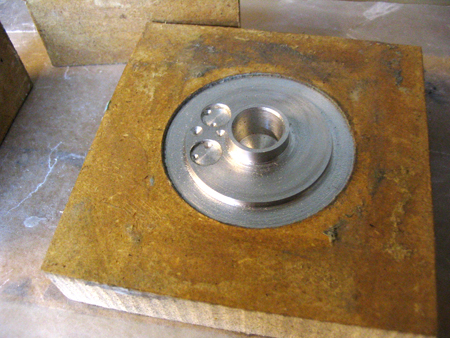
This is the master for the P-pickup bobbin, also cast in two halves. Since this bobbin is round, I turned the master from round aluminum stock in the lathe.
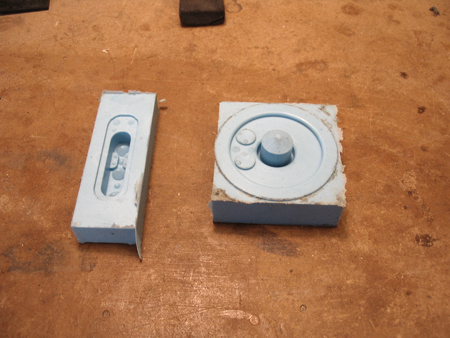
Here's what the molds look like, after curing and pulling them off of the masters.
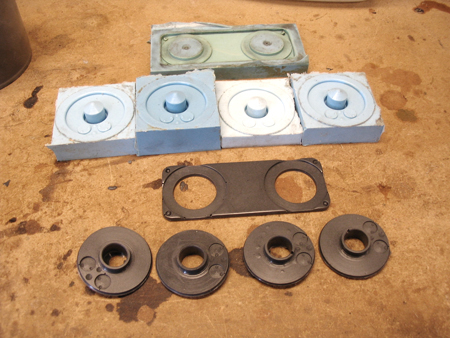
Here's a set of raw P-pickup bobbin halves and the base plate, which I cast by the same process.
|
Next Page..
|

